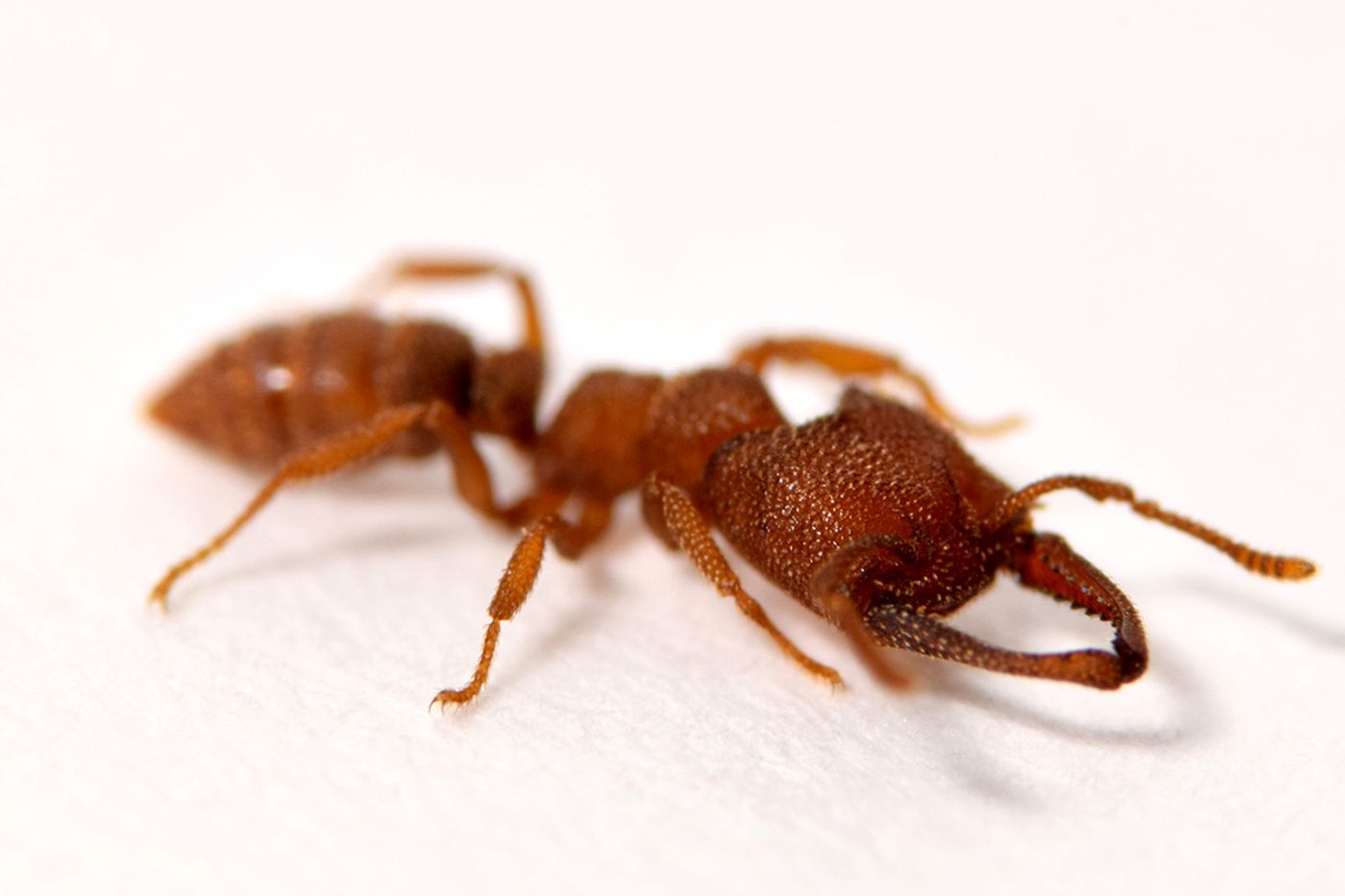Dracula Ant's Bite Recognized as the Fastest Animal Movement on Record
Researchers are astounded after discovering what they claim to be the fastest-known animal movement on record. The findings, recently uncovered by researchers from the University of Illinois, appear this week in the journal Royal Society Open Science.
Image Credit: Adrian Smith
As it would seem, the sharp mandibles of a Dracula ant (Mystrium camillae) can snap together at speeds exceeding 90 meters per second; for non-metric folk, that’s around 200 miles per hour. Even more astonishingly, the mandibles achieve these speeds in less than 0.000015 seconds.
These numbers are seemingly unbelievable, but they are indeed genuine. Given the circumstances, the Dracula Ant snaps its mandibles shut more than 5000 times faster than the blink of an eye and up to three times faster than the previous record-holder for this particular title: the snap of a trap-jaw ant.
The speed of the snap is so quick that the researchers needed high-speed cameras recording at approximately 480,000 frames per second (FPS) to capture it. X-ray imaging helped the researchers study the anatomy and computer simulations later helped the researchers better understand the mechanisms at work behind these incredible speeds.
"These ants are fascinating as their mandibles are very unusual," explained study lead author Andrew Suarez, an entomology professor at the University of Illinois. "Even among ants that power-amplify their jaws, the Dracula ants are unique: Instead of using three different parts for the spring, latch and lever arm, all three are combined in the mandible."
Related: Watch a team of ants create a bridge from themselves to cross a gap
Dracula ants use an entirely different method than trap-jaw ants for snapping their mandibles together at such high rates of speed. While the latter snap their mandibles together from the open position, Dracula ants snap their mandibles from the closed position, gradually pressing them together to generate spring tension that eventually gives.
According to Suarez, Dracula ants depend on this behavior for close combat with foes and prey. The quick snap smacks and stuns the enemy, enabling it to be transported back to the colony safely where it can be fed to other ants and their larvae.
"Our main findings are that snap-jaws are the fastest of the spring-loaded ant mouthparts, and the fastest currently known animal movement," added study co-author Fredrick J. Larabee from the Smithsonian National Museum of Natural History. "By comparing the jaw shape of snapping ants with biting ants, we also learned that it only took small changes in shape for the jaws to evolve a new function: acting as a spring."
Related: Worker ants intelligently regulate tunnel-digging efforts to avoid jams
The speeds associated with the Dracula ant’s bite are indeed impressive, but more research is needed to understand why they evolved this function and how it’s used. It should be interesting to see what future studies bring in this department.
Source: University of Illinois









